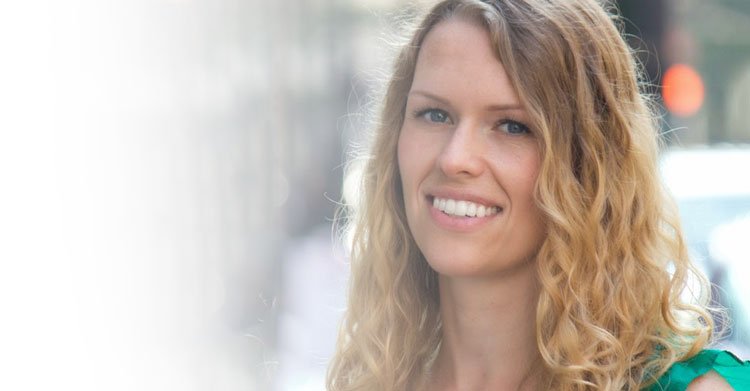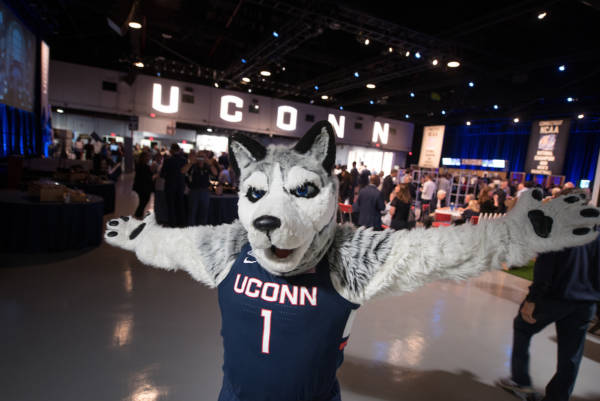UConn’s Alumni College Tackles the Reality of Fake News

Do you get your news from Facebook?
If so, you’re not alone. Statistics from the Pew Research Center show that 62 percent of U.S. adults get their news on social media.
But sometimes, the news we see doesn’t accurately portray the story, and there’s been national discussion on what’s known as “fake news.”
Anne Oeldorf-Hirsch, Assistant Professor, Department of Communication, will speak to how we engage with and learn from the news on social media at UConn’s second annual Alumni College on Saturday, January 28 in Boca Raton, Florida. As a sneak preview, we had the opportunity to ask Professor Oeldorf-Hirsch three questions about this current topic:
Q. “Fake news” has dominated the headlines, particularly with Facebook. What is this phenomenon and is it a common concern?
A. Fake news can take a variety of forms, and is nothing new: It can be satire intended to parody current events, or it can be false information intended to mislead the public. Lately, false information has been the focus. Unfortunately, there is an industry for selling fake news: Clicks through search engines and social media can make those writers or organizations money.
It’s difficult to quantify how common fake news is. Mark Zuckerberg recently stated that 99 percent of what people see on Facebook is “authentic,” and I haven’t seen any numbers posted for Google or Twitter.
Aside from fake news, credible news organizations have been facing changes in how we find and consume their content. In the flood of information we receive each day, it becomes increasingly necessary to attract readers’ attention and to get them to share content with their networks. This leads to catchier headlines, more sensational reporting, and “clickbait” articles, or those which use provocative wording to get users to click the headline for more information, even if that information isn’t presented. (Think, “…you’ll never believe what happened next.”) These types of headlines may also make it harder to distinguish real news from fake news.
Q. Will the “fake news” phenomenon continue? How much responsibility falls on the social media network versus the user?
A. Yes, it is likely to continue, but awareness has been brought to the issue. Technology companies that have a hand in media distribution, such as Facebook and Google, have acknowledged the problem, and have made varying statements on efforts to do their part to stop fake news from spreading. The problem is larger than just fake news though; it includes how we get any of our information online now.
On the one hand, selective exposure has existed since long before social media. That is, we have always preferred to pay attention to that with which we agree, and ignore that with which we don’t. On the other hand, social media sites such as Facebook and Twitter employ algorithms that function largely to show you content that will keep on you on the site, which generally means content that you want to see and agree with. This leads to filter bubbles (our feeds being increasingly personalized so we only see what we want to see) and echo chambers (the ideas we agree with being amplified and reinforced, while competing views are pushed out). This does certainly exacerbate the problem.
For now, users should be aware of how these sites operate and understand the potential effects. First, we need to fact-check the information we see, especially before sharing it. A recent study found that about 60 percent of news URLs that are shared on Twitter were never clicked on, meaning they were shared without being read.
As users, we can also make efforts to open up our filter bubbles by exposing ourselves to credible sources along the political spectrum. For reference, see Pew Research Center’s report on media polarization, which includes the most trusted sources by those along the liberal/conservative continuum. Engaging with people who have differing opinions, maybe better offline than online, can also help us broaden our perspectives.
Q. Overall, how is social media reshaping news?
A. We are exposed to more information than ever before, but we may be paying less attention. We are more likely to stumble upon news than seek it out. We are more likely to share content than read it. Ultimately, social media are providing new opportunities for news and media literacy.
Professor Oeldorf-Hirsch is just one of several expert speakers who will share information on current topics and UConn updates. If you consider yourself a lifelong learner, we hope you’ll join us at Alumni College.
